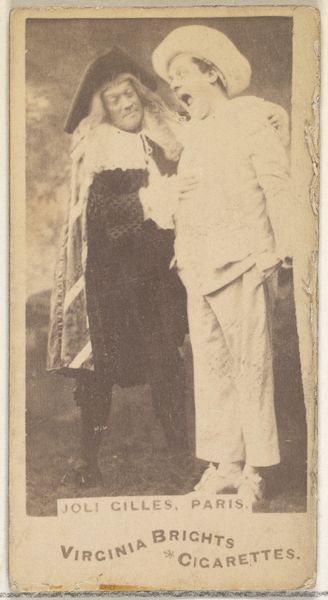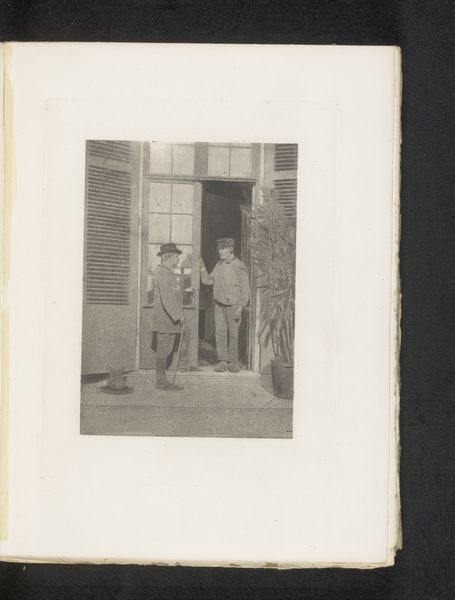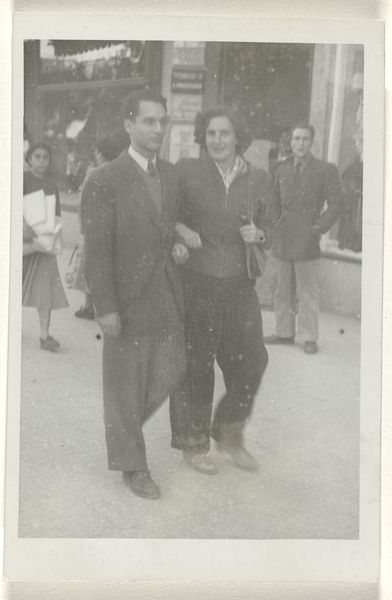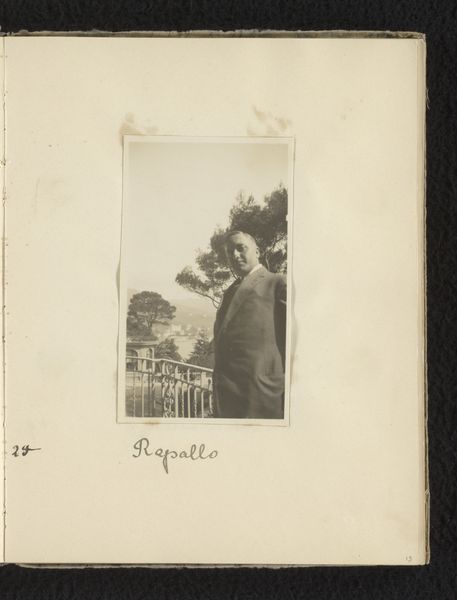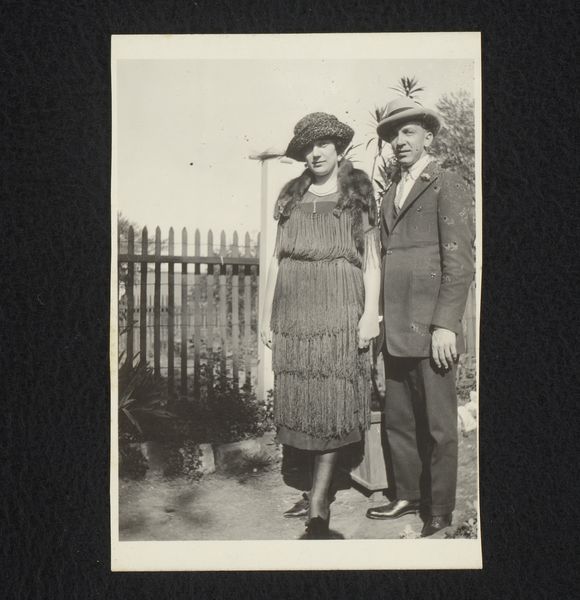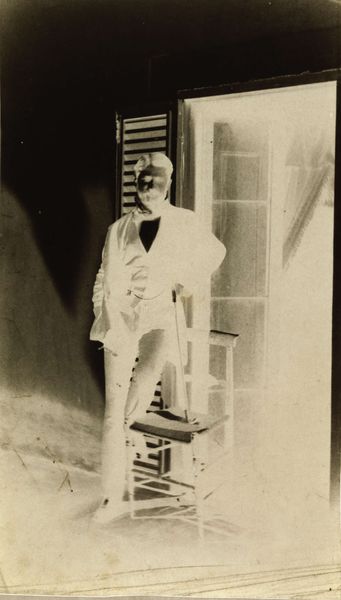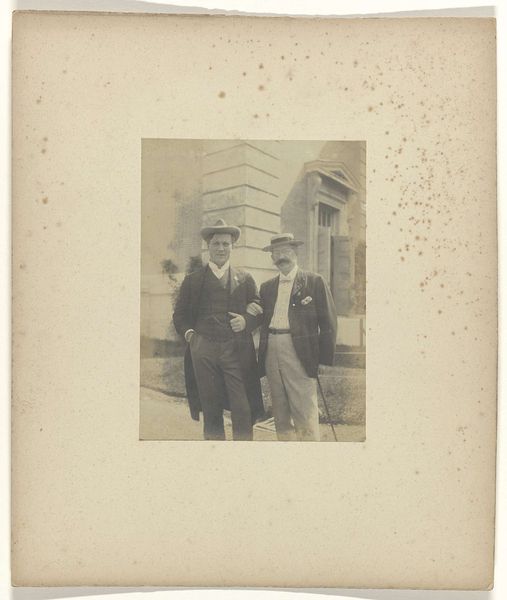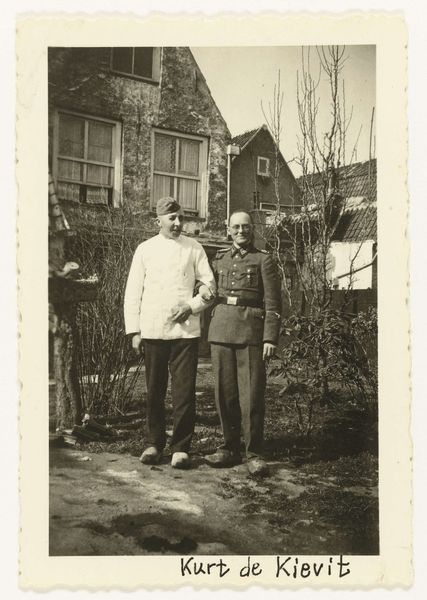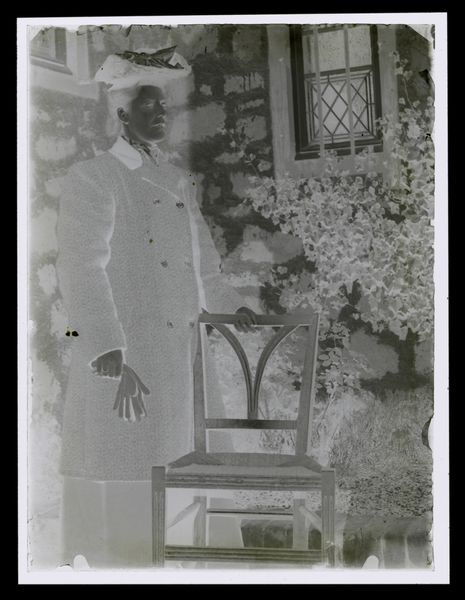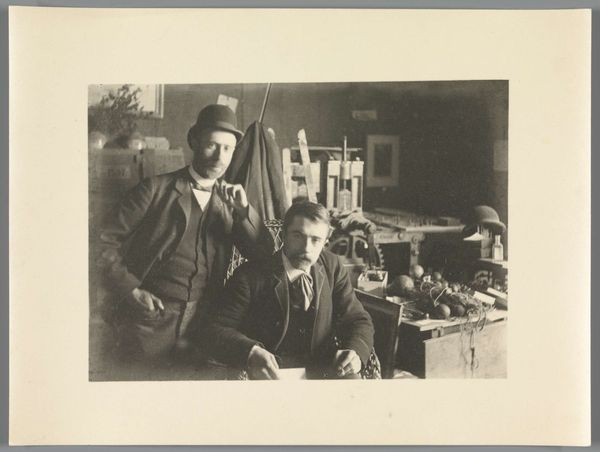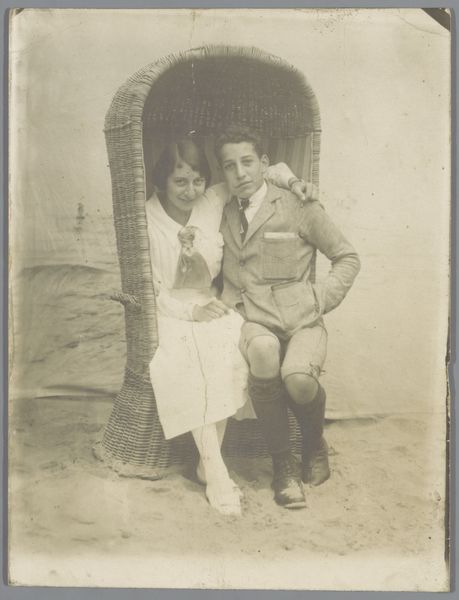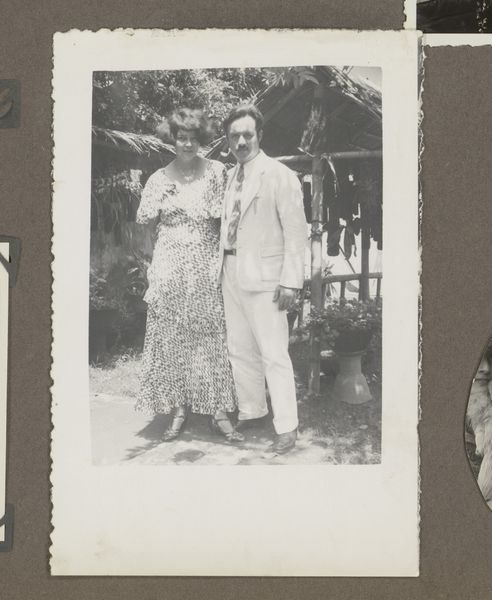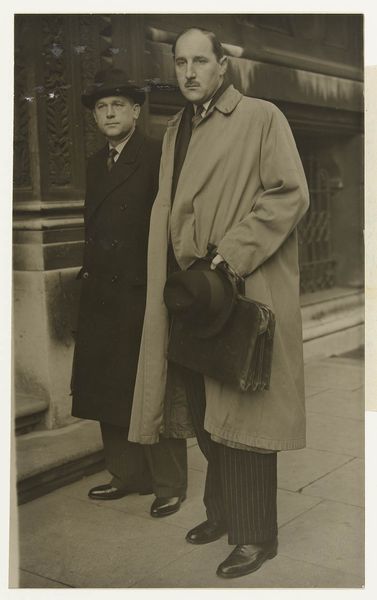
Eugen Wachenheimer met hoed en wandelstok in de hand en zijn echtgenote Else Wachenheimer-Moos, staand voor woningen die boven water zijn gebouwd 1922 - 1937
0:00
0:00
photography
#
portrait
#
photography
#
historical photography
#
cityscape
Dimensions: height 115 mm, width 70 mm
Copyright: Rijks Museum: Open Domain
Editor: Here we have a photograph, likely from sometime between 1922 and 1937, portraying Eugen Wachenheimer, holding a hat and walking stick, and his wife, Else, set against some unique buildings. They seem to be built right over the water. The photo has an aged look to it. What are your initial thoughts on the scene presented? Curator: Considering the materiality, it's fascinating to think about the photographer's labor – setting up the shot, using the equipment, and producing this tangible object. But let’s also think about those houses in the background; the construction itself would represent intensive physical labor using lumber from where, exactly? Editor: It’s true, the craftsmanship behind those waterside homes must be substantial. Did these structures represent something about the social conditions of that place, or that time period? Curator: Exactly! It invites us to explore the conditions that would necessitate and make possible housing built directly over the water. What kind of economic or social pressure led to that type of resource use? The clothes they are wearing are quite formal, and they seem like people of means, but what type of access would others have had to that type of construction? Also consider the photograph itself as a commodity; who was it for? What was its purpose? Was it something sold as a postcard, or kept private in a family collection? Editor: So the image offers clues about the relationship between labor, resources, and maybe even social class during that era, that can easily be missed? Curator: Precisely. We tend to overlook the underlying production chains and systems of consumption in images, which is something this photo really highlights through its depiction of labor and building resources, making us ask many questions beyond the simple presentation of the couple. Editor: I see the photo in a different light now, focusing less on the portrait itself and more on its social and economic undertones.
Comments
No comments
Be the first to comment and join the conversation on the ultimate creative platform.
